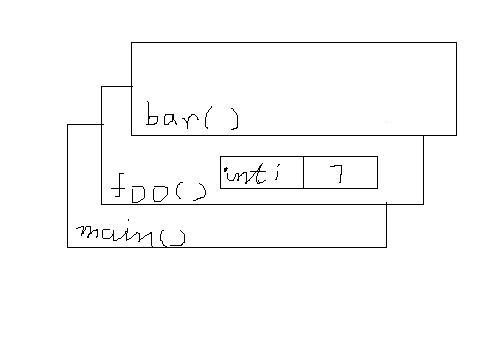图之Dijkstra算法
c语言实现如下:(使用邻接矩阵存储)
#include <stdio.h>
#include <malloc.h>
#define VERTEXNUM 6
//存放最短路径的边元素
typedef struct edge{
int vertex;
int value;
struct edge* next;
}st_edge;
void createGraph(int (*edge)[VERTEXNUM], int start, int end, int value);
void displayGraph(int (*edge)[VERTEXNUM]);
void displayPath(st_edge** path, int startVertex,int* shortestPath);
void dijkstra(int (*edge)[VERTEXNUM], st_edge*** path, int** shortestPath, int startVertex, int* vertexStatusArr);
int getDistance(int value, int startVertex, int start, int* shortestPath);
void createPath(st_edge **path, int startVertex, int start, int end, int edgeValue);
int main(void){
//动态创建存放边的二维数组
int (*edge)[VERTEXNUM] = (int (*)[VERTEXNUM])malloc(sizeof(int)*VERTEXNUM*VERTEXNUM);
int i,j;
for(i=0;i<VERTEXNUM;i++){
for(j=0;j<VERTEXNUM;j++){
edge[i][j] = 0;
}
}
//存放顶点的遍历状态,0:未遍历,1:已遍历
int* vertexStatusArr = (int*)malloc(sizeof(int)*VERTEXNUM);
for(i=0;i<VERTEXNUM;i++){
vertexStatusArr[i] = 0;
}
printf("after init:\n");
displayGraph(edge);
//创建图
createGraph(edge,0,1,6);
createGraph(edge,0,3,5);
createGraph(edge,0,2,1);
createGraph(edge,1,2,5);
createGraph(edge,1,4,3);
createGraph(edge,2,4,6);
createGraph(edge,2,3,5);
createGraph(edge,2,5,4);
createGraph(edge,3,5,2);
createGraph(edge,4,5,6);
printf("after create:\n");
displayGraph(edge);
//最短路径
/*存储的结构如下:
path[0]:edge0->NULL
path[1]:edge1->NULL
path[2]:edge1->edge2->NULL
path[3]:edge1->edge2->edge3->NULL
path[4]:edge4->NULL
从顶点0到0的最短路径:从0出发直接到0
从顶点0到1的最短路径:从0出发直接到1
从顶点0到2的最短路径:从0出发到1,从1出发到2
......
*/
st_edge** path = NULL;
//存储最短路径的权值
/*
shortestPath[0] = 0;
shortestPath[1] = 8;
shortestPath[2] = 12;
从顶点0到0的路径是0
从顶点0到1的路径是8
从顶点0到2的路径是12
*/
int* shortestPath = NULL;
//从顶点0开始寻找最短路径
int startVertex = 0;
//最短路径
dijkstra(edge, &path, &shortestPath, startVertex, vertexStatusArr);
printf("the path is:\n");
displayPath(path,startVertex,shortestPath);
free(edge);
free(path);
return 0;
}
//创建图
void createGraph(int (*edge)[VERTEXNUM], int start, int end, int value){
edge[start][end] = value;
edge[end][start] = value;
}
//打印存储的图
void displayGraph(int (*edge)[VERTEXNUM]){
int i,j;
for(i=0;i<VERTEXNUM;i++){
for(j=0;j<VERTEXNUM;j++){
printf("%d ",edge[i][j]);
}
printf("\n");
}
}
//打印最短路径
void displayPath(st_edge** path, int startVertex,int* shortestPath){
int i;
st_edge* p;
for(i=0;i<VERTEXNUM;i++){
printf("Path from %d to %d:",startVertex,i);
p = *(path+i);
while(p != NULL){
printf("%d(%d) ",p->vertex,p->value);
p = p->next;
}
printf("\n");
printf("the count is:%d\n",shortestPath[i]);
}
}
//最短路径
void dijkstra(int (*edge)[VERTEXNUM], st_edge*** path, int** shortestPath, int startVertex, int* vertexStatusArr){
//初始化最短路径
*path = (st_edge**)malloc(sizeof(st_edge*)*VERTEXNUM);
int i,j;
for(i=0;i<VERTEXNUM;i++){
if(i == startVertex){
st_edge* e = (st_edge*)malloc(sizeof(st_edge));
e->vertex = startVertex;
e->value = 0;
e->next = NULL;
(*path)[i] = e;
}else{
(*path)[i] = NULL;
}
}
//初始化最短路径的权值
*shortestPath = (int *)malloc(sizeof(int)*VERTEXNUM);
for(i=0;i<VERTEXNUM;i++){
if(i == startVertex){
(*shortestPath)[i] = 0;
}else{
(*shortestPath)[i] = -1;
}
}
//从顶点0开始,则顶点0就是已访问的
vertexStatusArr[startVertex] = 1;
int shortest, distance,start, end, edgeValue, vNum = 1;
//如果还顶点还没有访问完
while(vNum < VERTEXNUM){
shortest = 9999;
for(i=0;i<VERTEXNUM;i++){
//选择已经访问过的点
if(vertexStatusArr[i] == 1){
for(j=0;j<VERTEXNUM;j++){
//选择一个没有访问过的点
if(vertexStatusArr[j] == 0){
//选出一条value最小的边
if(edge[i][j] != 0 && (distance = getDistance(edge[i][j], startVertex, i, *shortestPath)) < shortest){
shortest = distance;
edgeValue = edge[i][j];
<SPAN style="WHITE-SPACE: pre"> </SPAN>start = i;
end = j;
}
}
}
}
}
vNum++;
//将点设置为访问过
vertexStatusArr[end] = 1;
//保存最短路径权值
(*shortestPath)[end] = shortest;
//保存最短路径
createPath(*path, startVertex, start, end, edgeValue);
}
}
//返回从startVertex到新的顶点的距离
int getDistance(int value, int startVertex, int start, int* shortestPath){
if(start == startVertex){
return value;
}else{
return shortestPath[start] + value;
}
}
//保存最短路径
void createPath(st_edge **path, int startVertex, int start, int end, int edgeValue){
if(start == startVertex){
st_edge* newEdge = (st_edge*)malloc(sizeof(st_edge));
newEdge->vertex = end;
newEdge->value = edgeValue;
newEdge->next = NULL;
st_edge** p = path + end;
while((*p) != NULL){
p = &((*p)->next);
}
*p = newEdge;
}else{
st_edge** pCopySrc = path + start;
st_edge** pCopyDes = path + end;
st_edge* newEdge = NULL;
while((*pCopySrc) != NULL){
newEdge = (st_edge*)malloc(sizeof(st_edge));
*newEdge = **pCopySrc;
newEdge->next = NULL;
*pCopyDes = newEdge;
pCopySrc = &((*pCopySrc)->next);
pCopyDes = &((*pCopyDes)->next);
}
newEdge = (st_edge*)malloc(sizeof(st_edge));
newEdge->vertex = end;
newEdge->value = edgeValue;
newEdge->next = NULL;
*pCopyDes = newEdge;
}
}
#include <stdio.h>
#include <malloc.h>
#define VERTEXNUM 6
//存放顶点的邻接表元素
//存放最短路径的边元素
typedef struct edge{
int vertex;
int value;
struct edge* next;
}st_edge;
void createGraph(st_edge** edge, int start, int end, int value);
void displayGraph(st_edge** edge);
void delGraph(st_edge** edge);
void dijkstra(st_edge** edge, st_edge*** path, int** shortestPath, int startVertex, int* vertexStatusArr);
void displayPath(st_edge** path, int startVertex,int* shortestPath);
int getDistance(int value, int startVertex, int start, int* shortestPath);
void createPath(st_edge **path, int startVertex, int start, int end, int edgeValue);
int main(void){
//动态创建存放边的指针数组
st_edge** edge = (st_edge**)malloc(sizeof(st_edge*)*VERTEXNUM);
int i;
for(i=0;i<VERTEXNUM;i++){
edge[i] = NULL;
}
//存放顶点的遍历状态,0:未遍历,1:已遍历
int* vertexStatusArr = (int*)malloc(sizeof(int)*VERTEXNUM);
for(i=0;i<VERTEXNUM;i++){
vertexStatusArr[i] = 0;
}
printf("after init:\n");
displayGraph(edge);
//创建图
createGraph(edge,0,1,6);
createGraph(edge,0,3,5补充:软件开发 , C++ ,





